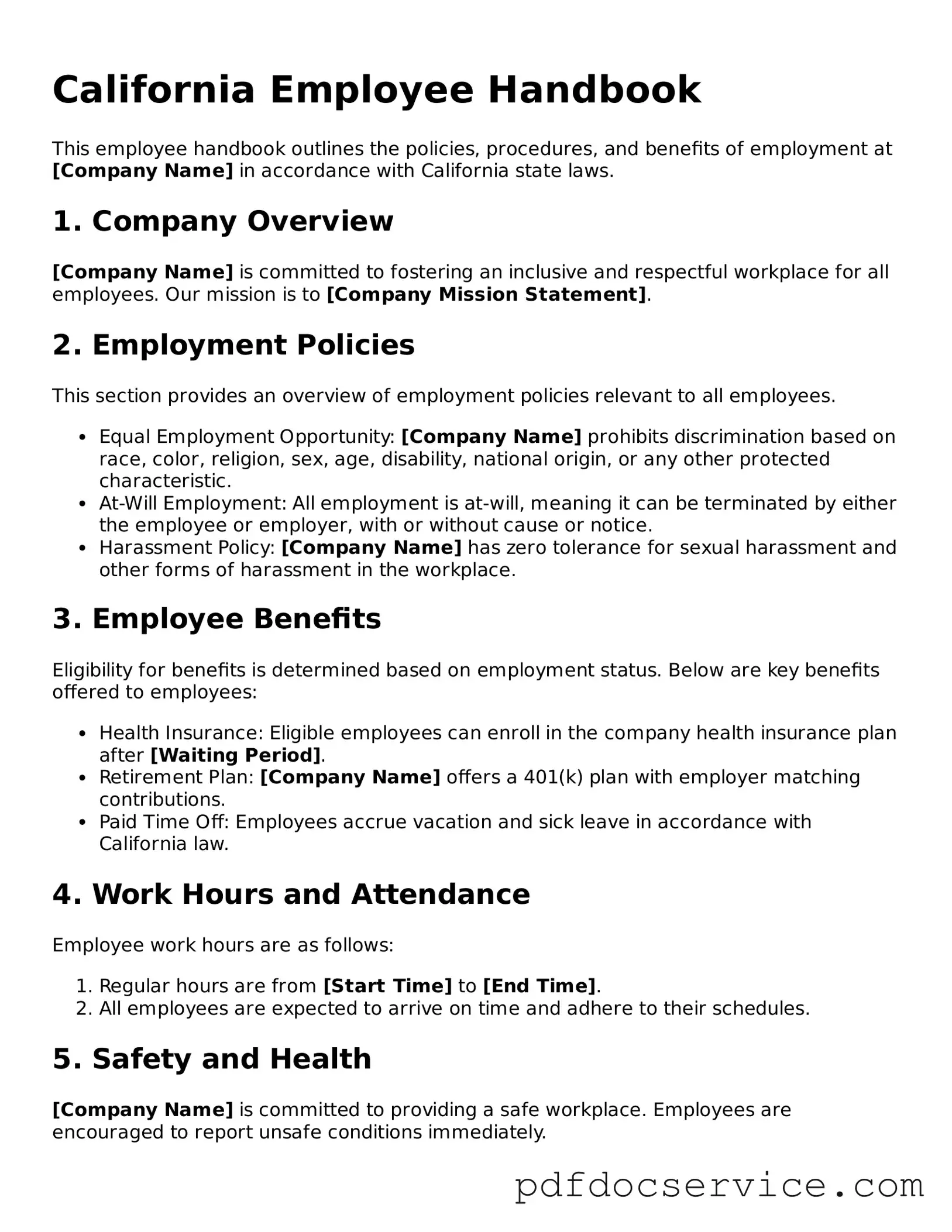What is a California Employee Handbook?
A California Employee Handbook is a document that outlines the policies, procedures, and expectations for employees within a workplace in California. It serves as a guide for both employers and employees, detailing rights, responsibilities, and company culture.
Why is an Employee Handbook important?
An Employee Handbook is important for several reasons:
-
It helps ensure compliance with state and federal laws.
-
It sets clear expectations for employee behavior and performance.
-
It provides a reference for company policies, reducing misunderstandings.
-
It can protect the employer in case of disputes by demonstrating that policies were communicated.
What should be included in a California Employee Handbook?
A comprehensive California Employee Handbook should include:
-
Company mission and values.
-
Employment policies (at-will employment, equal opportunity, etc.).
-
Compensation and benefits information.
-
Workplace conduct and disciplinary procedures.
-
Leave policies (sick leave, family leave, etc.).
-
Health and safety policies.
-
Confidentiality and privacy policies.
-
Procedure for addressing grievances or complaints.
How often should an Employee Handbook be updated?
An Employee Handbook should be reviewed and updated regularly. It is advisable to update the handbook at least annually or whenever there are significant changes in company policies, state laws, or federal regulations. Regular updates ensure that the information remains current and relevant.
Do I need a lawyer to create an Employee Handbook?
While it is not mandatory to hire a lawyer to create an Employee Handbook, consulting with one is highly recommended. Legal experts can help ensure that the handbook complies with all applicable laws and regulations, reducing the risk of legal issues in the future.
Can an Employee Handbook be used as a contract?
An Employee Handbook is generally not considered a binding contract. However, some policies may create implied contracts if they are not clearly stated as subject to change. It is important to include a disclaimer in the handbook stating that it does not constitute a contract of employment.
How should employees be trained on the Employee Handbook?
Employees should receive training on the Employee Handbook during their onboarding process. This can include:
-
A formal orientation session.
-
Providing copies of the handbook for review.
-
Encouraging questions and discussions about policies.
-
Periodic refresher training sessions to reinforce key policies.
What should I do if an employee violates a policy in the Handbook?
If an employee violates a policy outlined in the Employee Handbook, it is essential to follow the disciplinary procedures specified in the handbook. This may include a verbal warning, written warning, or further disciplinary action, depending on the severity of the violation. Consistency in enforcement is crucial to maintain fairness and uphold the policies.
